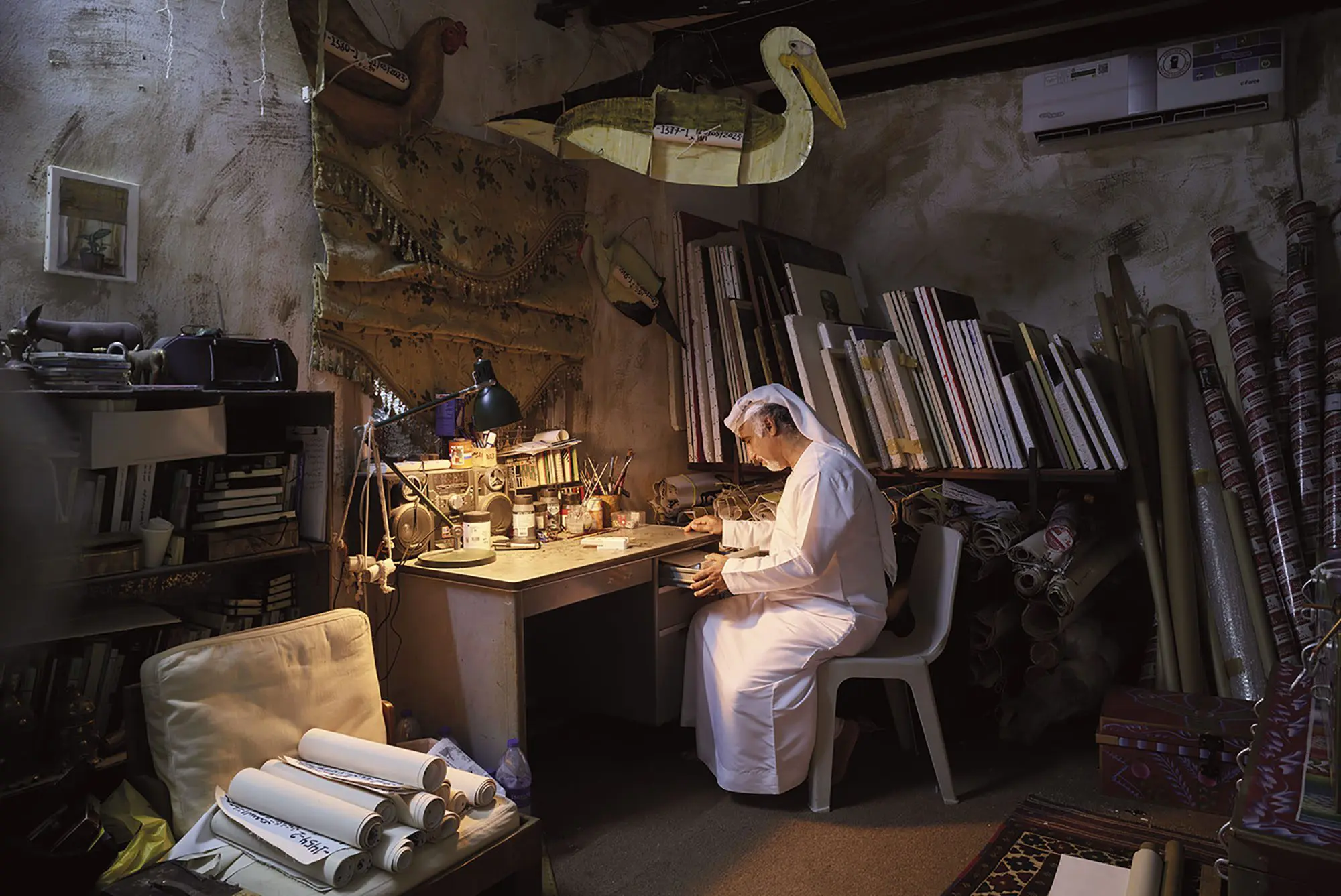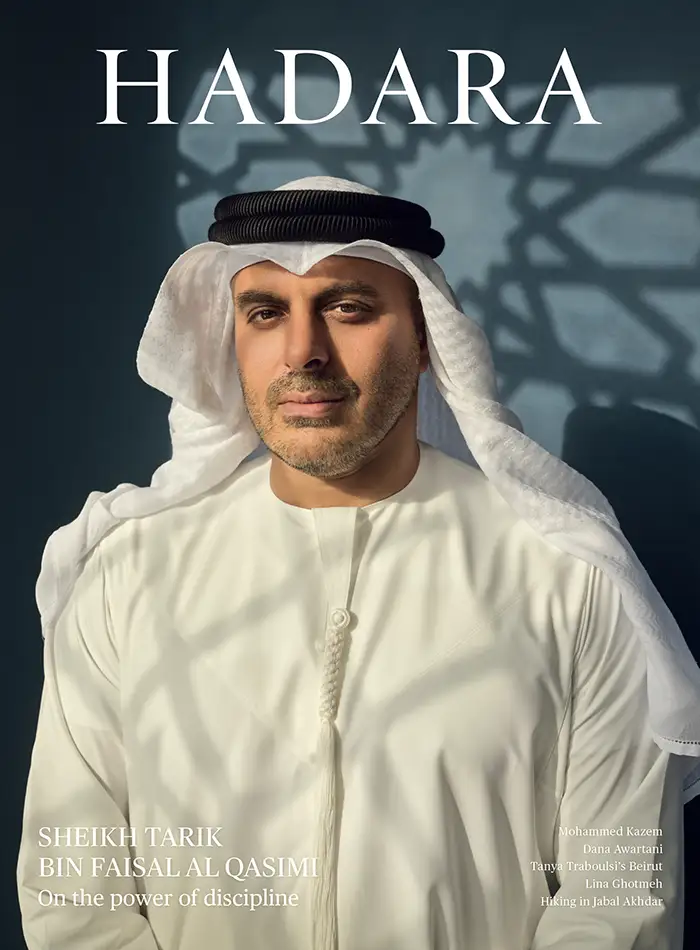The Journeyman
Abdullah Al Saadi, a seminal Emirati artist, will represent the UAE at the 60th International Art Exhibition in Venice from April 20. His exhibition, like his studio practice, is rooted in the natural landscape of his home.
By Anna Seaman
Over the centuries, many feet have traversed the desert sands of the Arabian Peninsula. Some seeking sustenance, some seeking shelter and others seeking inspiration. Although the musings of these wanderers were mostly charted in poems passed down orally, their footprints have left an imprint of collective memory upon the modern Arab world.
It was this concept that struck Tarek Abou El Fetouh when he visited artist Abdullah Al Saadi in his remote studio in the rugged hills around Madha, an Omani enclave just south of Sharjah’s Khorfakkan province. Abou El Fetouh, whose curatorial practice is influenced by classical Arab literature, was chosen to curate Al Saadi’s exhibition for the UAE National Pavilion at the Biennale Arte 2024 in Venice, which opens on April 20. As he completed the journey to reach the studio, which involved snaking uphill on narrow village roads, crossing an invisible international border, and then continuing on foot through undergrowth before arriving at a simple structure with no air conditioning or Wi-Fi, Abou El Fetouh was curious about the journeys that Al Saadi regularly takes to create his art.
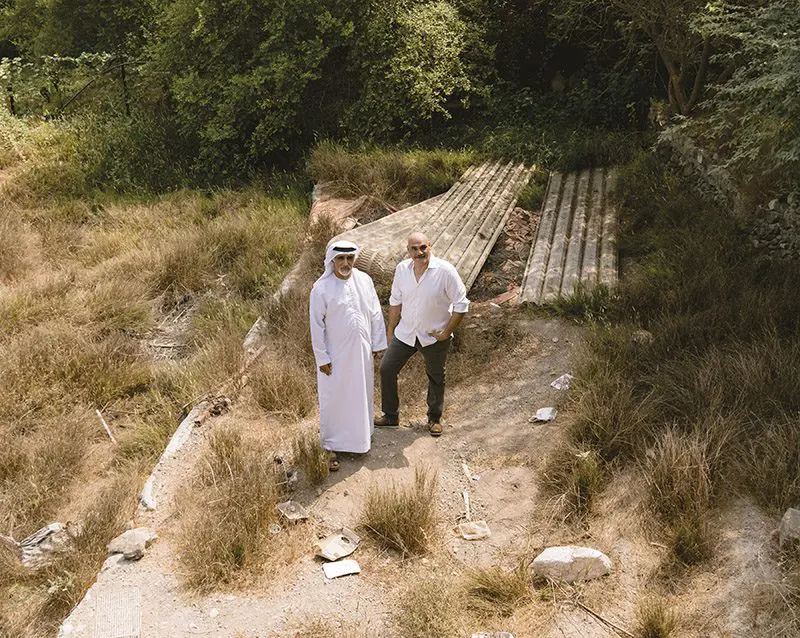
A key figure in the UAE’s contemporary art scene, Abdullah Al Saadi’s prolific practice ranges from painting, drawing, sculpture, performance and photography to collecting and cataloguing found objects. The artist has created a comprehensive body of work connected to the landscapes of the Arabian Peninsula. His exhibition in Venice will be curated by Tarek Abou El Fetouh, above, with whom Al Saadi collaborated on a public intervention in Expo 2020 Dubai. Al Saadi in his studio photographed by Roman Mensing, both courtesy The National Pavilion UAE—La Biennale Di Venezia.
Born in 1967, Al Saadi graduated from Al Ain University with a degree in English literature before going on to study Japanese painting in Kyoto. He is a key figure in a pioneering generation of Emirati artists, and his practice reveals a fascination with the relationship between humans and nature. Many of his artworks derive from journeys, where he finds himself drawn to the wilderness and during which he documents the landscape around him in paintings, drawings, photographs, and written diary entries or by collecting objects, which he later assiduously archives. Abou El Fetouh’s reading of Al Saadi’s practice was that he was reliving remnants of times gone by.
“During his journeys, Al Saadi starts to draw, paint, or write once he is immersed in nature, exactly as the classical Arab poets described the stages leading up to the composition of their poems,” Abou El Fetouh says.
And, if it is the role of a poet to find a language to describe the things that evade the senses, then Al Saadi does so with his art. However, while some of his art consists of abstract mark-making, other pieces are cartographic, while others are found objects, which he archives. So, when he met this part-poet, part-mapmaker and part-storyteller, Abou El Fetouh devised a curatorial framework titled Abdullah Al Saadi: Sites of Memory, Sites of Amnesia, the juxtaposition of which he says are “both necessary to the formation of individual and collective memory.”
The collective memory that Abou El Fetouh refers to can be found in the Arabic literature that he read growing up in Cairo and that Al Saadi read at school in the UAE. However, while this shared memory encompasses Arab poets of the past, Al Saadi says he is also inspired by the dream-like descriptions of European romantic poets such as Byron, Blake, and Wordsworth.
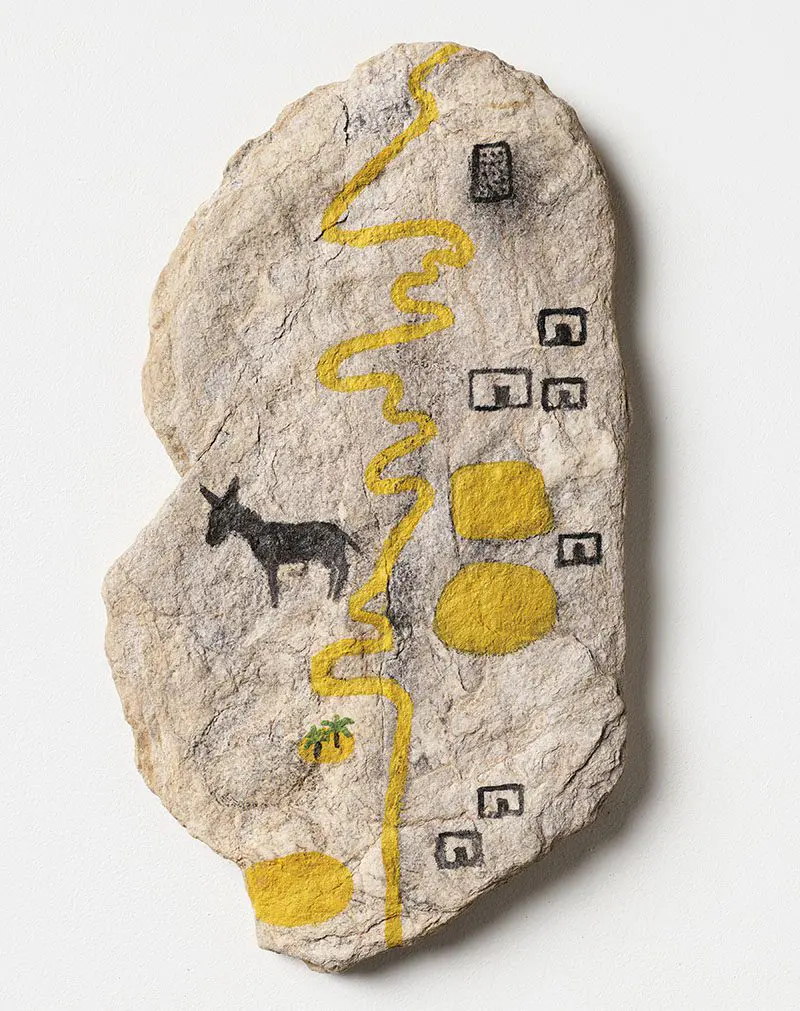
Abdullah Al Saadi, The Slipper’s Journey, Rock 1.1 (2015). Acrylic paint on rock. This series of works comprises 85 small stones and rocks upon which Al Saadi has painted abstract musings. Photo by Roman Mensing, courtesy The National Pavilion UAE—La Biennale Di Venezia.
“I was fascinated with poetry at university,” Al Saadi says. “The [romantic] poets were writing in a way that I felt close to, it was as if they could access my emotions.” When he graduated, Al Saadi set his mind on a journey of discovery. “I decided that I wanted to travel the world on a bicycle, but my circumstances changed and it wasn’t possible. It stayed a dream.” Instead, he embarked on a series of journeys through his own land, following in the unseen footsteps of those that had gone before him, revealing a poetic connection to the land.
“Abdullah is not documenting the landscape with his art,” Abou El Fetouh says. “He is creating his own universe. He manifests some things and excludes others, hence Sites of Memory, Sites of Amnesia.”
The exhibition features eight artwork series—with two created specifically for Venice—all relating to a specific journey. Al Saadi’s journeys are usually solo, where he will camp out and carry his supplies with him. They can last anywhere from 24 hours to 20 days. Before he departs on a journey, he will name it after his chosen travel companion (object, animal, book, or vehicle). “The presence of these travel companions has a significant impact on his artworks, as they join his exploration of the land and of human beings’ place in it,” Abou El Fetouh explains.
The Slipper’s Journey comprises 85 small stones and rocks upon which he has painted abstract musings. For the journey, which took place in 2015, the artist walked through mountain villages of the UAE’s eastern region wearing slippers (zannoba) that he had made from rubber and goat skin and during which he transported his supplies in a wheelbarrow. A Journey in the Footsteps of Camar Cande by Car (2017) was a reiteration of his 2010-2011 expedition with his dog and a donkey named Camar Cande. Here, he produced a series of drawings and paintings encased in old biscuit tins, which capture a sense of nostalgia but also of treasure to be discovered.
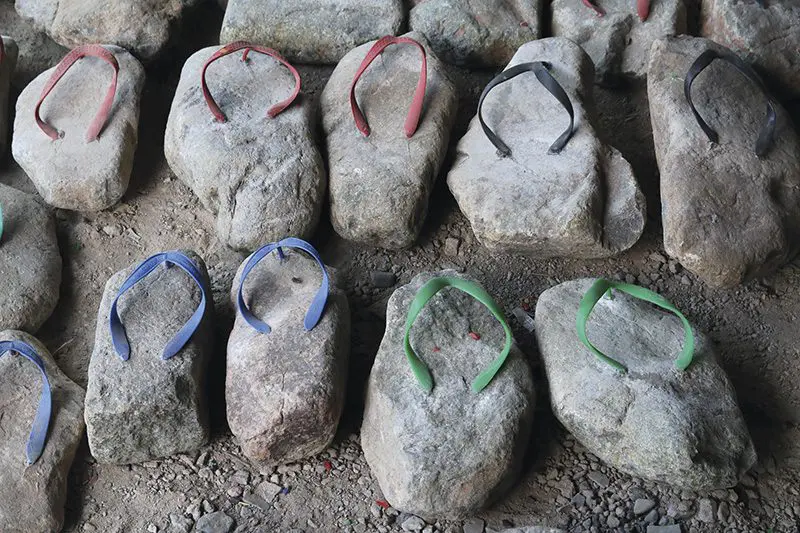
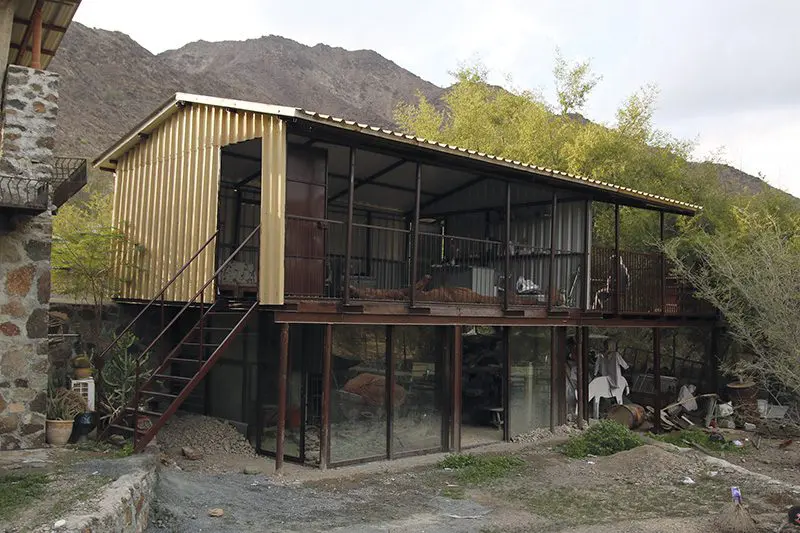
Top, Stone Slippers (2013). A visual metaphor for the life of a wanderer who travels constantly in search of something, but which remains elusive. Al Saadi’s remote studio in the hills around Madha, an Omani enclave south of Khorfakkan. Photos by Haupt and Binder, Universes in Universe.
“He does not document his journeys, rather he archives,” Abou El Fetouh says. “He creates sites of memory, drawing on collective memory which run in parallel to documented history.”
One of the new works to be presented in Venice will depict the first time that Al Saadi travelled with sound as his companion. Gramophone Journey took place last October and for it the artist travelled by bicycle to a quiet spot in the mountains and spent three uninterrupted days listening to music. His bicycle was equipped with a scrolling canvas attached to a metal frame, allowing him to draw while on the journey. He wrote down the names of the songs and artists in the Mayan alphabet. The final scrolls, filled with symbols and lines, resemble musical scores, and will be presented in scroll form, emphasising both what is revealed as well as what is hidden.
The experience of visitors to the exhibition in Venice will also be a kind of journey. They will move along a path between displayed artworks to reach shelves filled with closed metal chests that store concealed art pieces. These chests will be opened by performers constantly present in the space as a re-enactment of the artist’s ritual with visitors to his studio. Here again we return to memory and amnesia—but ultimately to Al Saadi himself. “I want to show the fact that Abdullah is a prolific artist and how incredible his practice is, so it is important to bring the atmosphere of his studio to the exhibition,” Abou El Fetouh says. “It is collective memory that Al Saadi summons into the present, and which he meticulously preserves for a future.”

